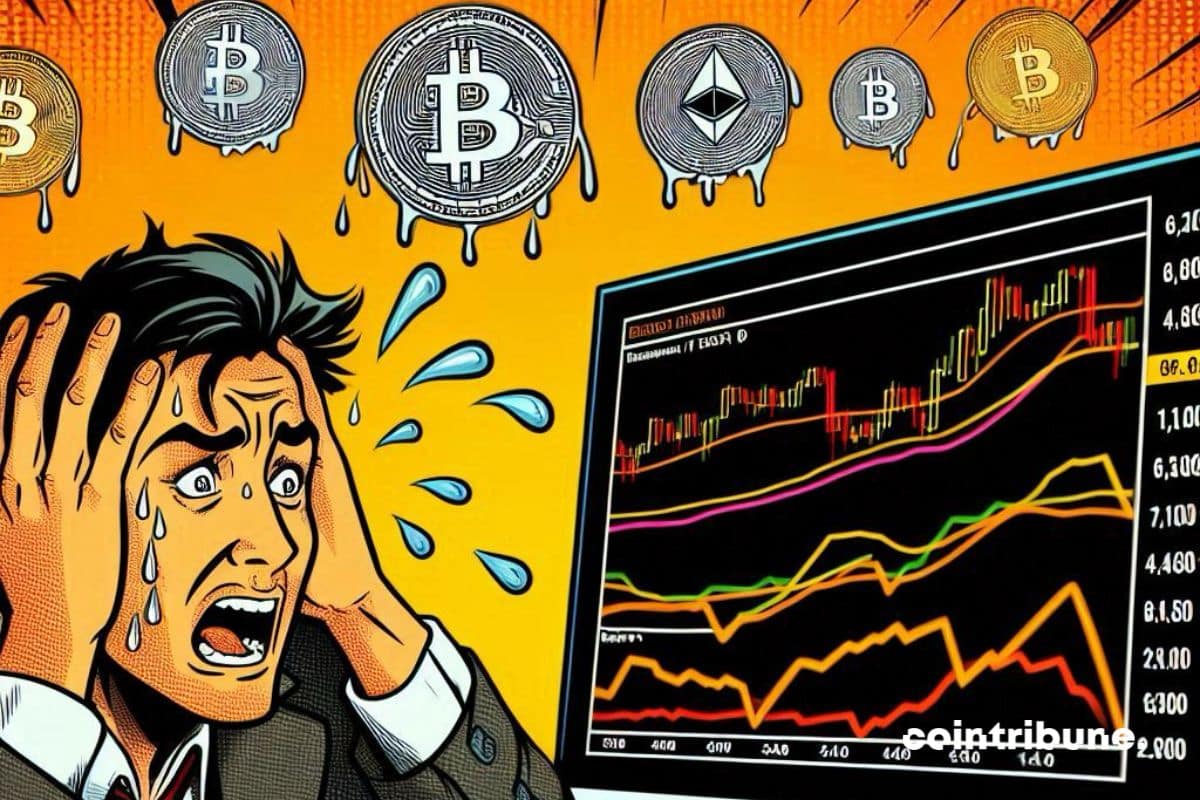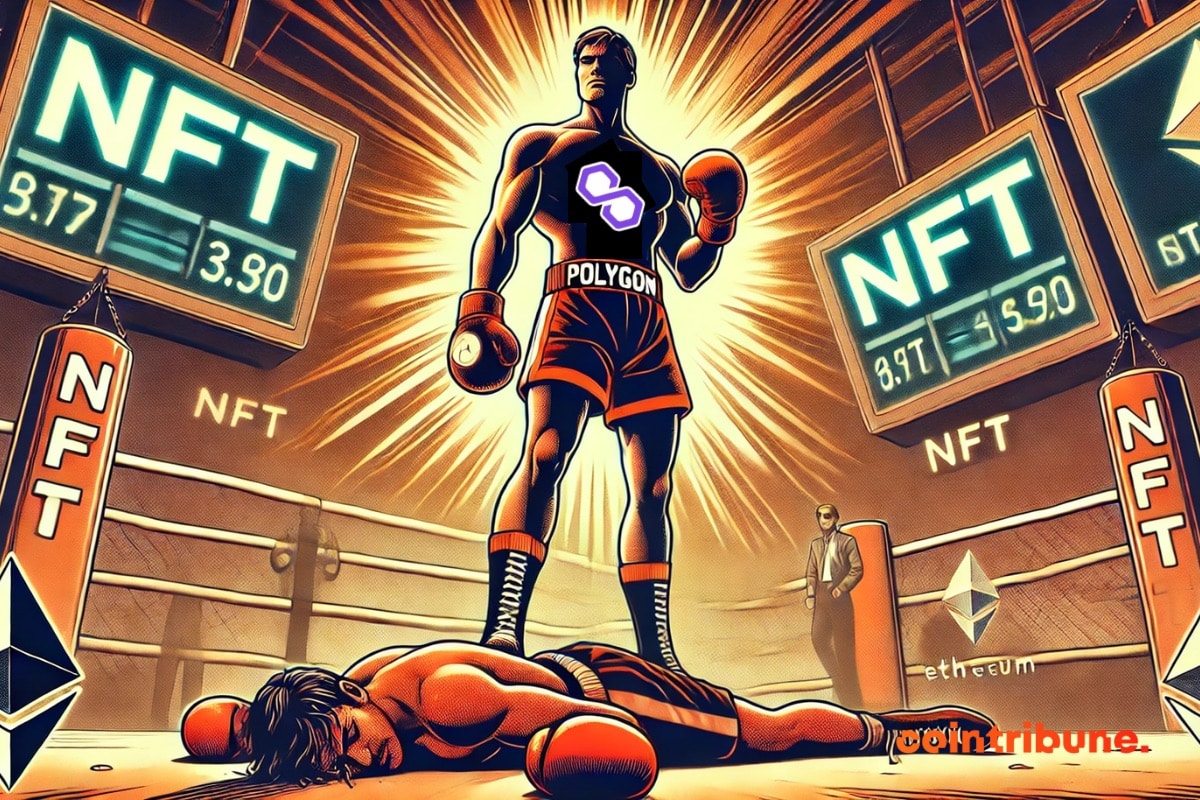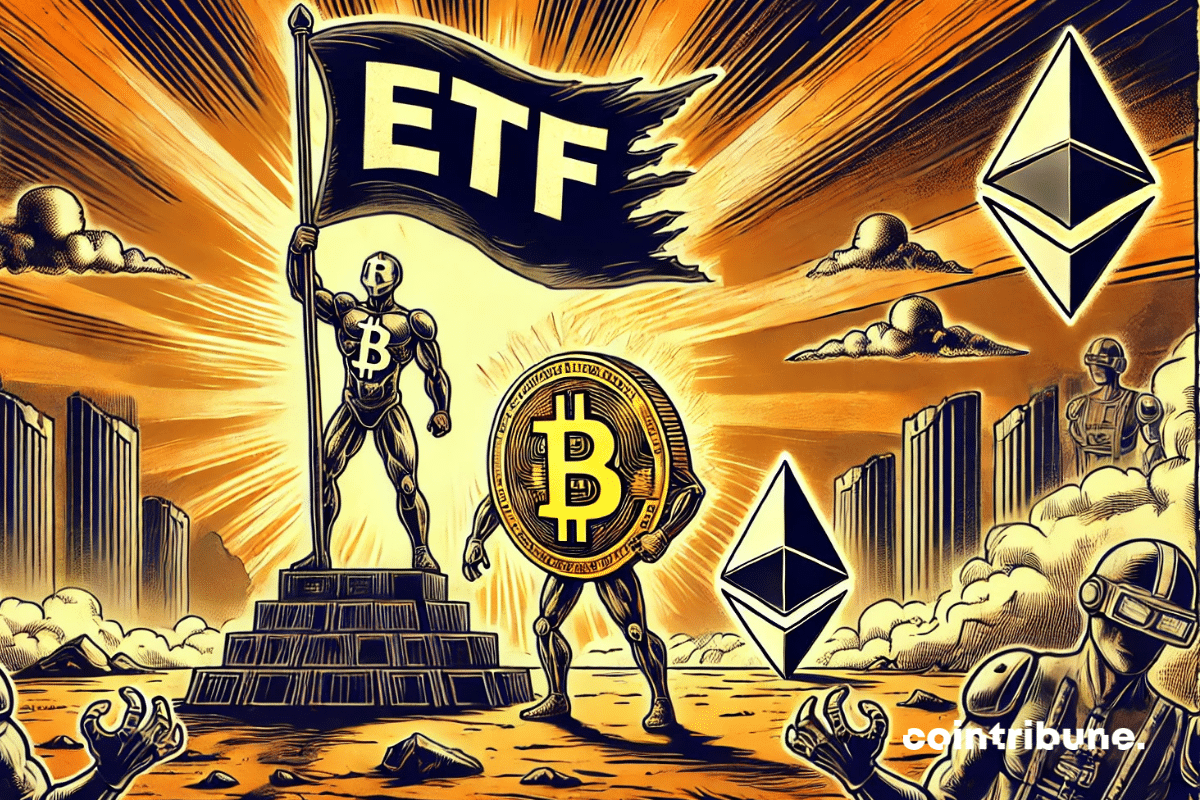The round ball is entering a new dimension. Forget simple passes and sliding tackles: FIFA has taken a step further into the metaverse. On April 30th, the global football organization announced the creation of a homegrown blockchain, simply called "FIFA Blockchain." A decision that, at first glance, seems purely technical. But behind the lines of code, a whole crypto strategy is taking shape, much bolder than it appears.
Ethereum (ETH)
Vitalik Buterin has bold ambitions for Ethereum in 2025. With essential tools at his disposal, such as network resilience and large-scale decentralization, he unveils a vision that could redefine the future of crypto. It remains to be seen whether these plans will be enough to save Ethereum.
Ethereum remains in a waiting phase, between consolidation and potential recovery. Find our complete analysis and the current technical outlook for ETH.
Bunq, the well-known European neobank for digital nomads, is expanding its offering: it's time for cryptocurrencies! The app now allows users to manage savings and crypto in one basket, thanks to Kraken.
While uncertainty persists in the crypto market, Ethereum stands out with a dynamic that draws attention. Boosted by a massive return of institutional capital, solid on-chain indicators, and a favorable technical setup, the asset appears ready to challenge the resistance of $2,000. In the face of ongoing volatility, ETH is regaining a central place in investment strategies, driven by converging signals that market operators cannot ignore.
Ethereum is pulling out all the stops: a gas limit growth at turbo speed, promising 2,000 TPS... as long as the asthmatic servers don't crash along the way.
The cryptocurrency market is holding its breath this week. Bitcoin is struggling under a critical resistance, Ethereum is showing signs of fatigue, and XRP is gaining momentum... As volatility increases, every movement counts. Discover our strategic forecasts to anticipate the next major maneuvers on these three major assets.
As Ethereum goes through a period of economic weakness, two members of its community, Kevin Owocki and Devansh Mehta, have just proposed an innovative reform to invigorate its application ecosystem. Their idea: to introduce a dynamic fee structure aimed at better balancing developers' revenues and fairness for users.
While Ripple builds a discreet empire, Ethereum hesitates. Solana warns: the unreplicable success of XRP is not a playbook, but a market accident.
The apparent calm of the crypto market could well shatter. At stake: over 8 billion dollars in Bitcoin and Ethereum options are set to expire this Friday, one of the largest volumes of the year. With each expiration, volatility looms. However, this time, the gaps between current prices and pain points could trigger unexpected rebounds. In a climate of macroeconomic hesitation, this massive expiration could well hasten a new fundamental movement.
Are crypto ETFs in danger? The SEC prolongs the wait despite a new pro-crypto president. The details in this article!
Despite a bleak market climate, Ethereum is sending a strong signal: 449,000 ETH have been transferred in one day to accumulation addresses, an all-time record. This strategic movement, observed amid falling prices, reveals a persistent confidence among some long-term investors. Contrary to the prevailing sentiment, this operation raises questions about a possible cycle change, as volatility remains high and economic uncertainties continue to weigh on the entire crypto sector.
Charles Hoskinson, the founder of Cardano, launched a scathing critique against Ethereum, asserting that the second largest blockchain in the crypto universe may not survive the next 15 years. He highlighted three major design flaws that will lead to its downfall.
Neglected, criticized, almost forgotten... Ethereum has just reminded us that it is not done yet. In just two weeks, ETH has surged by 30%, surpassing $1,800. Between a reversal figure, falling fees, and a renewed global interest, the machine is back in motion. How far will it go?
Polygon surprises the NFT market by surpassing Ethereum with a collection backed by physical assets. This performance marks a turning point in the industry, where the tokenization of real objects is increasingly attracting investors seeking tangible value and blockchain security.
Ethereum is regaining momentum. While its price struggles to bounce back, the network is witnessing an explosion of new users. With 1.83 million depositors in a week, the DeFi crypto star seems to be regaining the interest of investors. A strong signal that could indicate a trend reversal.
Ethereum is making a strategic shift that is both discreet and radical in the crypto universe. As the network prepares to face colossal technical challenges, its Foundation is reshuffling the balance of power. The goal: to free Vitalik Buterin from operational constraints and propel him towards uncharted horizons. A maneuver that could redefine the very DNA of blockchain, between unchecked ambition and calculated pragmatism.
According to a recent analysis by Binance Research, the upcoming Ethereum upgrades, Pectra and Fusaka, could redefine the network's capabilities in terms of scalability and crypto payments.
Hayden Adams, founder of Uniswap, believes that Solana is currently the best blockchain to scale decentralized finance (DeFi) at the layer 1 level. This stance reignites the debate on the limitations of Ethereum's modular model.
Peter Brandt's explosive prediction about Ethereum (ETH) has electrified the crypto community. This veteran trader, whose career spans five decades, anticipates a collapse in the price to around $800, a level unseen since 2022. While ETH struggles to stabilize above $1,600, this warning reignites debates about the uncertain future of the second-largest cryptocurrency. Between relentless technical analysis and the unwavering optimism of certain industry figures, the market is divided. But who is really right?
Bitcoin and Ethereum users can finally breathe easy: transaction costs on the two main blockchains have dropped by more than 90% compared to the previous year. This major change reflects a calming of network activity, but also a notable improvement in operational efficiency.
While Bitcoin struts on the stock market like a peacock in rut, Ethereum broods in silence. Zero inflows, zero outflows: investors have clearly put Ether on a dry diet.
Ethereum could soon find itself in a technical deadlock as the growth of layer 2 solutions threatens to saturate its processing capacity, despite planned improvements.
This Friday, while stock markets close for "Good Friday," the crypto market remains tense. Over $2.2 billion worth of options on Bitcoin and Ethereum are expiring: a massive volume that captures traders' attention. This technical expiration, although expected, occurs in a climate of significant uncertainty, between bullish signals, extreme pain levels, and pressures related to U.S. monetary policy. While the options expire, the risks remain fully intact.
Ethereum's dominance in the crypto market has dropped to its lowest level in 5 years, raising questions but also optimism among some analysts. While massive sell-offs continue, several technical indicators suggest a potential entry point for investors looking for a rebound.
Solana is back in the spotlight. After a downturn marked by a massive outflow of capital, the network has recorded an unexpected return of funds. Nearly $120 million was transferred into its ecosystem within a month. This reversal intrigues analysts and sparks speculation about a recovery of SOL, its native token. While some see it as a strong signal of regained confidence, others remain cautious due to an still fragile market structure. What does this renewed interest really conceal?
Against all odds, the crypto market started 2025 in decline, catching investors off guard. Bitcoin and Ether, usually strong performers in the first quarter, recorded their worst historical performances during this period. This sharp reversal, breaking with known seasonal dynamics, reignites debates about a potential rebound in the second quarter, while economic uncertainties weigh on all risk assets.
XRP has just achieved a feat few anticipated: surpassing Ethereum in market capitalization, if only for a few hours. This surge, unprecedented since 2018, is not insignificant. In a market undergoing reshaping, it reveals a possible shift in the balance of power. Indeed, it is no longer just a matter of price, but of perception, usage, and institutional recognition. This strong signal, coming from an asset long considered secondary, raises questions about the real position of the historical giants in the crypto ecosystem.
Ethereum shows the lowest transaction fees in 5 years. Discover why traders are closely watching this crypto network.
Ethereum's dominance in the crypto market has dropped to 7.18%, a level close to its all-time low. A bearish chart pattern now suggests a possible correction towards $1,100 in the coming weeks.





























